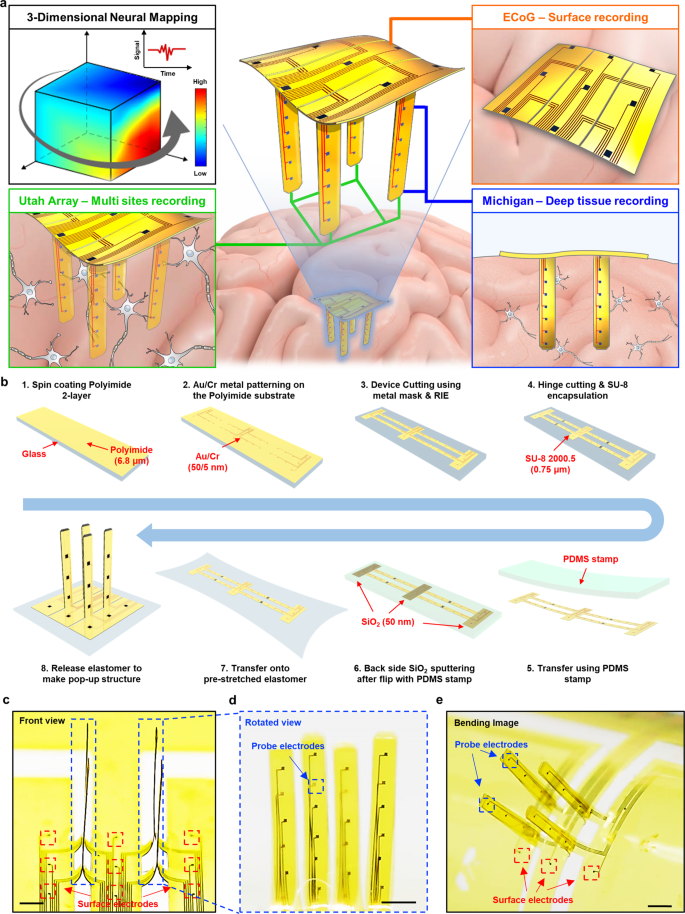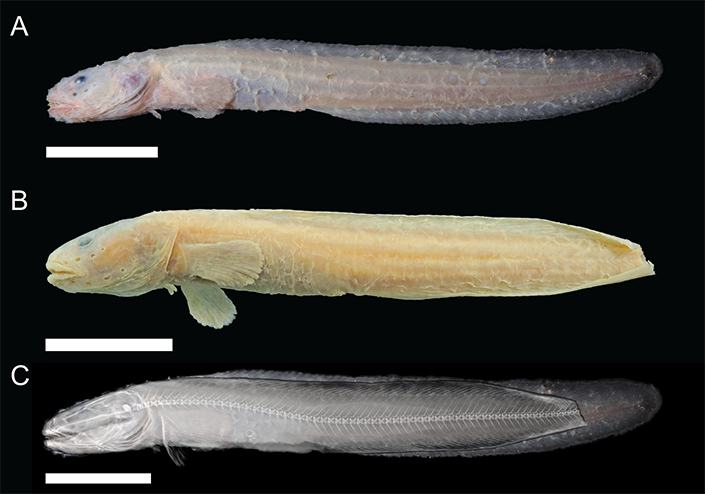2023-01-20 ペンシルベニア州立大学(PennState)
◆この試作品は、現在オンラインで入手可能な『Bioactive Materials』誌の5月号に掲載される新しい論文で紹介されました。この研究は、同誌の表紙を飾る予定です。
◆Sheikhiが開発した止血用マイクロニードル技術は、一般的な絆創膏のように貼って、素早く止血することが可能です。生体適合性と生分解性を備えたマイクロニードルアレイ(MNA)がパッチに施されることで、血液との表面接触が増え、血液凝固プロセスが促進される。この針はまた、機械的な連動によってパッチの接着性を高め、傷の閉鎖を促進します。
◆MNAパッチは、現在病院で出血した傷の治療に使われているハイドロゲル技術と比較することができるが、ハイドロゲルの応用には準備と医療専門知識が必要である。マイクロニードルパッチは、一般的な市販の絆創膏のように、誰でもすぐに止血できる。
◆マイクロニードルは、細胞や薬剤などの生物製剤を皮膚から投与したり、コラーゲンの生成を促す美容整形にすでに使用されているが、非常に小さいため、Sheikhi氏によれば、痛みを伴わずに使用できるという。
<関連情報>
- https://www.psu.edu/news/engineering/story/novel-microneedle-bandage-could-save-lives-stopping-blood-loss-wounds/
- https://www.sciencedirect.com/science/article/pii/S2452199X22003607
迅速な出血治療のための組織接着性止血マイクロニードルアレイ Tissue adhesive hemostatic microneedle arrays for rapid hemorrhage treatment
ReihanehHaghniaz,Han-JunKim,Hossein Montazerian,Avijit Baidya,Maryam Tavafoghi,Yi Chen,Yangzhi Zhu,Solmaz Karamikamkar,Amir Sheikhi,Ali Khademhosseini
Bioactive Materials Available online :24 November 2022
DOI:https://doi.org/10.1016/j.bioactmat.2022.08.017

Highlights
- •Hemostatic microneedle arrays (MNAs) are prefabricated and ready-to-use.
- •The MNAs enable rapid blood coagulation by attracting platelets.
- •The MNAs attach to soft tissues via bioadhesion and interlocking.
- •The MNAs are biocompatible, biodegradable, and do not promote inflammation.
Abstract
Blood loss by hemorrhaging wounds accounts for over one-third of ∼5 million trauma fatalities worldwide every year. If not controlled in a timely manner, exsanguination can take lives within a few minutes. Developing new biomaterials that are easy to use by non-expert patients and promote rapid blood coagulation is an unmet medical need. Here, biocompatible, and biodegradable microneedle arrays (MNAs) based on gelatin methacryloyl (GelMA) biomaterial hybridized with silicate nanoplatelets (SNs) are developed for hemorrhage control. The SNs render the MNAs hemostatic, while the needle-shaped structure increases the contact area with blood, synergistically accelerating the clotting time from 11.5 min to 1.3 min in vitro. The engineered MNAs reduce bleeding by ∼92% compared with the untreated injury group in a rat liver bleeding model. SN-containing MNAs outperform the hemostatic effect of needle-free patches and a commercial hemostat in vivo via combining micro- and nanoengineered features. Furthermore, the tissue adhesive properties and mechanical interlocking support the suitability of MNAs for wound closure applications. These hemostatic MNAs may enable rapid hemorrhage control, particularly for patients in developing countries or remote areas with limited or no immediate access to hospitals.


